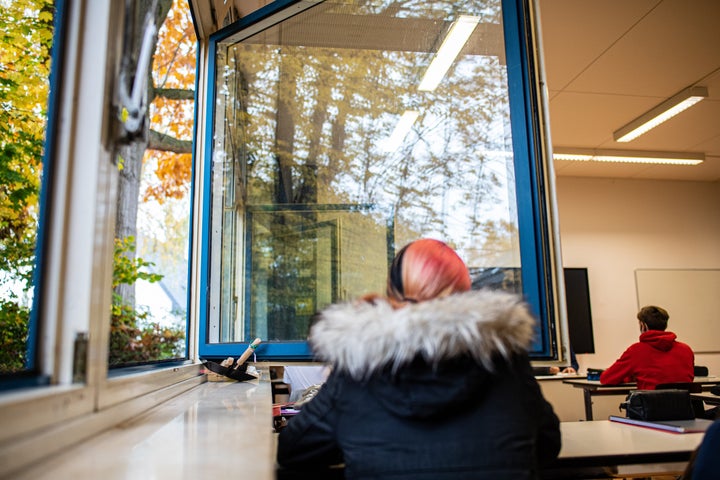Prepare for a chilly winter, because the government is advising us all to open our windows wherever possible.
The advice, detailed in a video from the Department of Health, is currently relevant when you have any tradesperson visiting your home, or if you’re mixing within your support bubble. But it’ll become all the more pertinent as and when we all leave lockdown and potentially start mixing indoors more frequently.
So, why are we being asked to do this, and will it actually make that much difference?
“If the virus is in the air and you remove that contaminated air, you also remove the virus. This is what ventilation does,” explains Dr Julian Tang, a consultant virologist and expert in respiratory sciences at the University of Leicester.
“Think about if you have a smoky room or burn the toast in the kitchen. Opening the windows dramatically lowers these contaminants, replacing bad air with fresh air. You can smell the impact almost immediately.”
We already know that poor ventilation in confined indoor spaces is associated with the increased transmission of respiratory tract infections such as influenza, tuberculosis and rhinovirus infection, according to the European Centre for Disease Prevention and Control.
Research to date suggests Covid-19 is no different. This is why we’re all being told to open our windows – and the small change could have a big impact.
Dr Tang previously contributed to a study on ventilation published by the World Health Organisation, which looked at the impact of opening windows in hospitals.
The research found window opening was associated with increased air flow and lower virus transmission rates – although the percentage decrease will be impacted by a number of factors, including the size of the room.
Nevertheless, Dr Tang says: “If you leave the windows open and continually refresh the air that people are breathing, this will make a massive difference.”
Of course, while you’re opening the windows you should follow general social distancing rules too; a bit of fresh air doesn’t mean hugging and kissing those outside your household is suddenly advised.

There have been photos taken of students around the world wrapped up in coats while completing their lessons. Teachers in the UK have also been advised to leave their windows open wherever possible.
Although it may not be the most conducive teaching environment, Dr Tang says this will help with virus transmission – especially as the weather gets colder.
“When you open the windows, if it is cold outside and warm inside this adds to the ventilation flows (called thermal buoyancy driven flows) due to this temperature difference,” he explains. “The warmer contaminated air from inside the room exits the windows near the top (as it is lighter and hot air rises) and the colder clean fresh air enters the window near the bottom (as it is denser).”

Temperature is one of the two driving forces behind natural ventilation, says Dr Tang. The second is wind, also called “the wind-driven or pressure difference-driven flows”.
Both wind and temperature can impact the extent of ventilation, which is why it’s difficult to pinpoint exactly how helpful opening windows is in different buildings at different times of the year.
But from what we do know, Dr Tang insists it’s well worth doing. You should also open the window where possible if you need to take a train, bus or taxi.
“Open the windows everywhere where you have many people outside of your ‘bubble,’ as you don’t know who is infected,” says Dr Tang. “This will reduce the risk to everyone, not just you, as you don’t know if you are asymptomatically infected or not.”